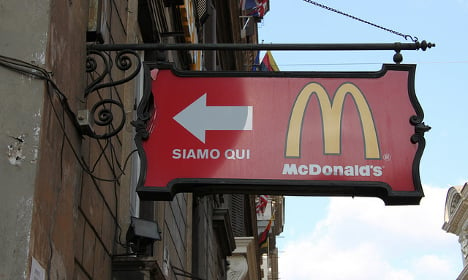There are two other McDonald's located close to the heart of the Catholic church, but the latest restaurant caused furore because it is actually on Vatican-owned property.
Several senior cardinals live directly above the burger giant in the Pio Borgo district.
McDonalds around corner from St Peter's sq, open for business in Vatican-owned building, despite resident protests pic.twitter.com/MW6JYVNNrJ
— Sylvia Poggioli (@spoggioli1) December 31, 2016
The decision to open the restaurant was described as “controversial and perverse” by Cardinal Elio Sgreccia in October.
Sgreccia told La Repubblica that the move was “by no means respectful of the architectural traditions of one of the most characteristic squares which look onto the colonnade of Saint Peters,” he said.
Seven cardinals live directly above the site, which covers 538 square metres (5,800 square foot), and is being rented out by ASPA, the authority in charge of the Vatican's real estate. McDonald's will pay the Vatican €30,000 ($33,000) a month in rent.
Moreno Prosperi, head of the Committee for the Protection of Borgo, the historic district around the Vatican where many cardinals live, told AFP that the planned outlet would be a further blow to “identity of the area”, which draws huge throngs of tourists.
Not lovin' it
McDonald's, along with other foreign fast food chains, has a problematic history in Italy.
Its first restaurant opened up near the Spanish steps in Rome 30 years ago, sparking protests. Fashion brand Valentino, which has its Rome headquarters nearby, complained about the smells and noise from the restaurant, and the opening also sparked the now global Slow Food movement.
Elsewhere, Florence has also taken the struggle to protect its culinary history particularly strongly.
In March, the city passed a law aimed at ensuring that at least 70 percent of produce in all new eateries was locally sourced, amid worries that a growing number of cheap kebab shops and other fast food outlets aimed at tourists meant the city was at risk of losing its character.
In 2016, the Tuscan capital turned down a request for the golden arches to set up shop in the city's central square, leading the fast food chain to threaten legal action.




 Please whitelist us to continue reading.
Please whitelist us to continue reading.
Member comments